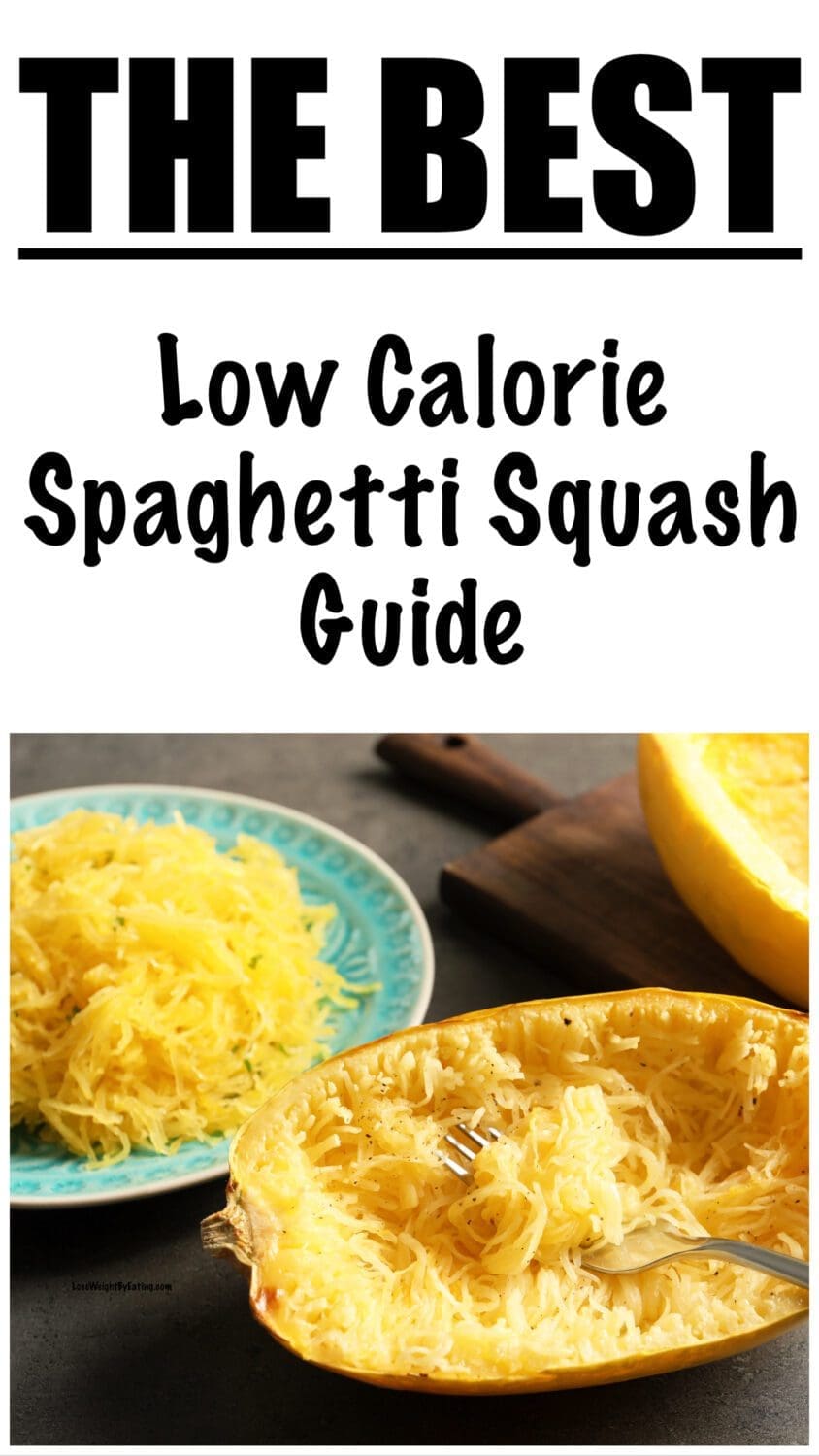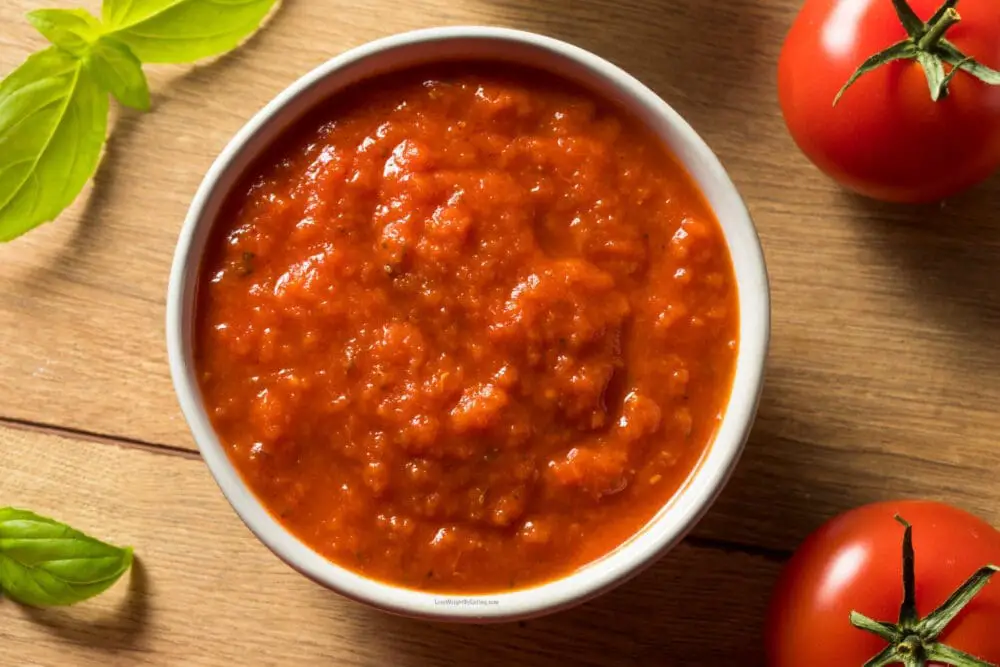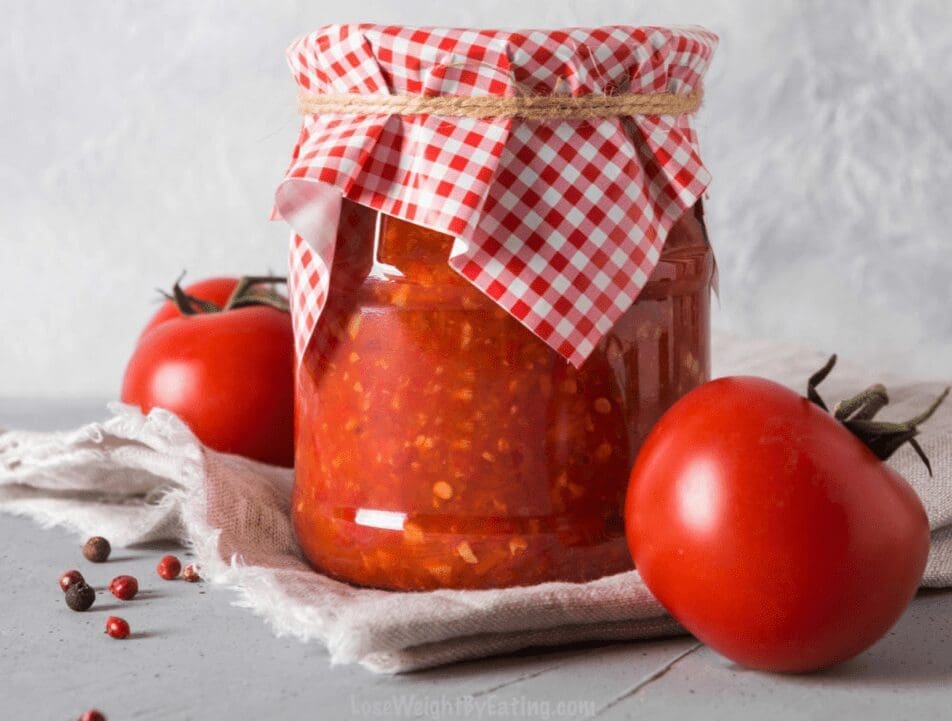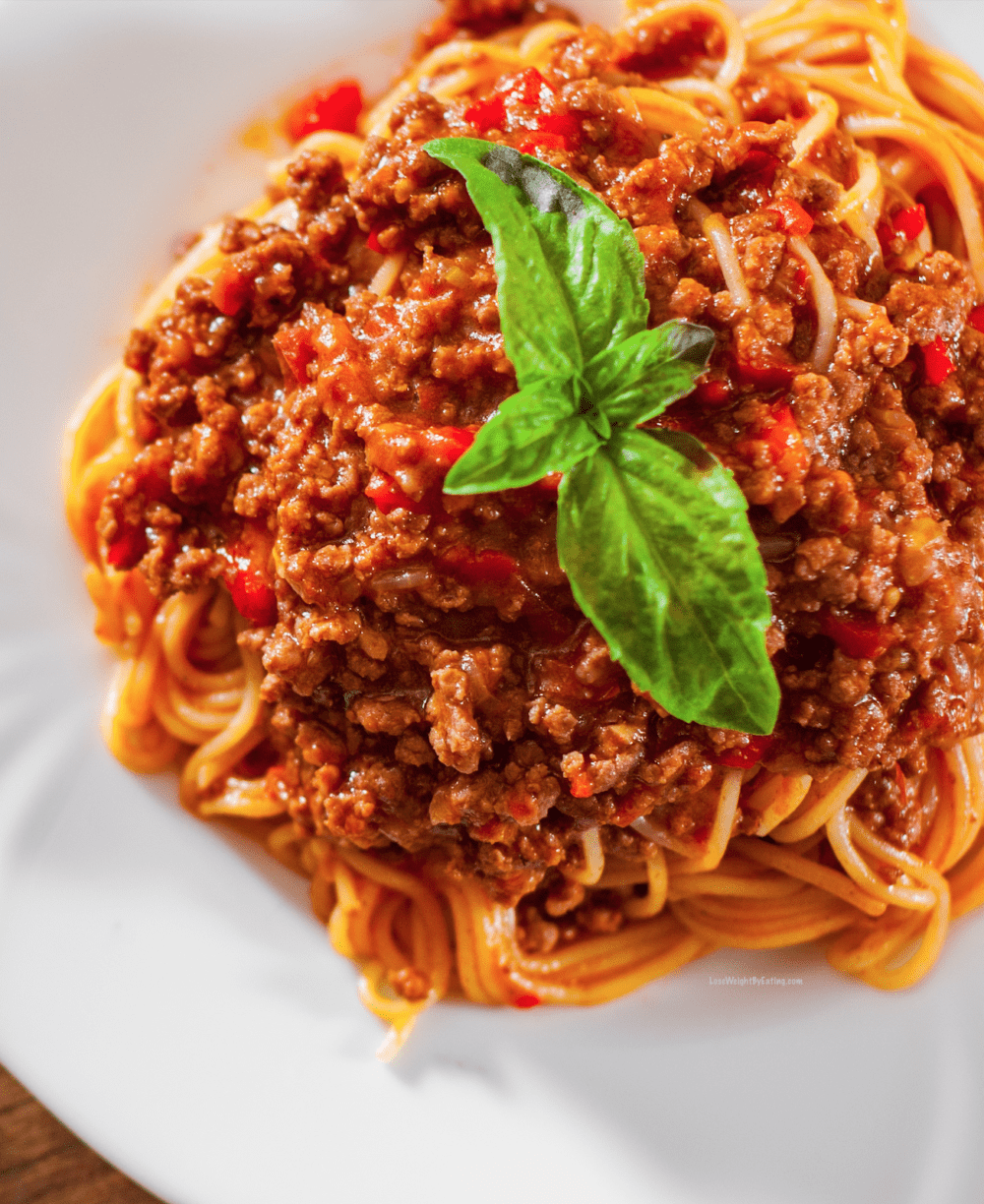Learn the calories in spaghetti squash, how it compairs nutritionally to pasta. Plus how to cook it, and even find some low calorie healthy pasta sauces to top your spaghetti squash with. When it comes to losing weight or maintaining a healthy diet, one of the first things people consider is cutting back on carbohydrates. While pasta is a staple in many households, it is also known for being high in calories and carbs.
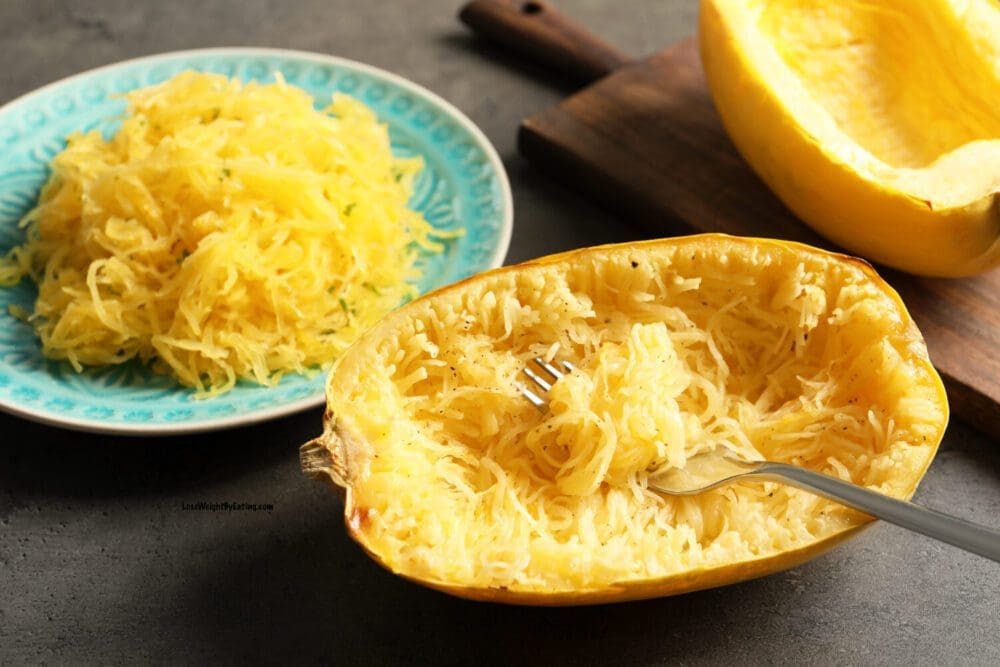

What is Spaghetti Squash?
Spaghetti squash is a winter vegetable that gets its name from its stringy flesh, which resembles spaghetti noodles when cooked.
It belongs to the same family as pumpkins and zucchinis and is native to North and Central America.
The flesh is typically yellow or orange, and the outer skin is hard and smooth.
Is Spaghetti Squash Healthy?
Spaghetti squash is considered a very healthy vegetable due to its low calorie and carbohydrate content, high fiber content, and the nutrients it contains.
It is also a versatile vegetable that can be used in a variety of recipes, making it a great addition to any diet. Here are some reasons why spaghetti squash is considered a healthy choice:
- Low calorie: One cup of cooked spaghetti squash contains only 42 calories, making it a great option for those who are watching their weight or trying to maintain a healthy diet.
- Low carbohydrate: Spaghetti squash is low in carbohydrates, with only 10 grams per cup, making it a good option for those who are watching their blood sugar levels or following a low-carbohydrate diet.
- High in fiber: One cup of cooked spaghetti squash contains 2.2 grams of fiber, which can help to promote digestive health and keep you feeling full and satisfied.
- Nutrient-dense: Spaghetti squash is a good source of vitamins and minerals, including vitamin C, vitamin B6, potassium, and manganese, which are important for maintaining overall health and wellbeing.
- Versatile: Spaghetti squash can be used in a variety of recipes, from savory dishes like spaghetti squash with meat sauce to sweet treats like spaghetti squash pudding, making it a great option for those who want to add more variety to their diet.
Spaghetti squash is a healthy and delicious vegetable that can be a great addition to any diet. Whether you are trying to lose weight, manage your blood sugar levels, or simply want to eat more nutritious foods, spaghetti squash is a great choice
Is Spaghetti Squash Good for Weight Loss?
Spaghetti squash is a great food to incorporate into a weight loss diet. With only around 40 calories per cup, spaghetti squash is a low-calorie option that can help you feel full and satisfied without overeating. Additionally, spaghetti squash is high in fiber, which can further aid in weight loss by promoting feelings of fullness and reducing calorie intake.
In comparison to traditional pasta, spaghetti squash is also much lower in carbohydrates. One cup of cooked spaghetti squash has only around 10 grams of carbs, compared to the approximately 40 grams in a cup of cooked pasta. This makes spaghetti squash a great option for those following a low-carb or keto diet.
Incorporating spaghetti squash into your diet is also a great way to increase your vegetable intake, which is important for overall health and weight loss. Vegetables are low in calories and high in fiber, vitamins, and minerals, making them a great addition to any weight loss diet.
Overall, spaghetti squash can be a great food to incorporate into a weight loss diet. With its low calorie and carbohydrate content, high fiber content, and ability to increase vegetable intake, it can help support weight loss efforts while still providing a satisfying and delicious meal option.
10 Ways to Swap Pasta for Spaghetti Squash
If you’re looking for a healthier alternative to pasta, spaghetti squash is a great option. Not only is it low in calories and carbohydrates, but it also has a similar texture to spaghetti, making it a great substitute in a variety of recipes. Here are 10 ways to swap pasta for spaghetti squash:
- Spaghetti squash with meat sauce: Use spaghetti squash instead of pasta in your favorite meat sauce recipe.
- Spaghetti squash lasagna: Layer cooked spaghetti squash with tomato sauce, ricotta cheese, and mozzarella cheese for a healthier version of lasagna.
- Spaghetti squash carbonara: Use spaghetti squash instead of pasta in a traditional carbonara recipe for a lighter, lower-carb version.
- Spaghetti squash Pad Thai: Use spaghetti squash instead of rice noodles in a traditional pad Thai recipe for a low-carb, vegetable-packed dish.
- Spaghetti squash primavera: Toss cooked spaghetti squash with sautéed vegetables and a light cream sauce for a healthy and delicious primavera.
- Spaghetti squash alfredo: Use spaghetti squash instead of pasta in an alfredo sauce for a lighter version of this classic dish.
- Spaghetti squash with pesto: Toss cooked spaghetti squash with homemade or store-bought pesto for a delicious and nutritious meal.
- Spaghetti squash mac and cheese: Mix cooked spaghetti squash with a homemade cheese sauce for a healthier version of mac and cheese.
- Spaghetti squash stir-fry: Use spaghetti squash instead of rice noodles in a stir-fry for a low-carb, veggie-packed meal.
- Spaghetti squash with marinara and meatballs: Use spaghetti squash instead of pasta in a classic Italian dish for a healthier, low-carb version.
These are just a few ideas to get you started. With its versatility and low calorie and carbohydrate content, spaghetti squash can be used in a variety of recipes as a healthier substitute for pasta.
Calories in Spaghetti Squash
One of the biggest advantages of spaghetti squash is its low calorie count. One cup of cooked spaghetti squash contains only 42 calories, compared to 221 calories in the same amount of cooked pasta.
This makes it an ideal option for those looking to reduce their calorie intake. Additionally, spaghetti squash is low in carbohydrates, with only 10 grams per cup, compared to 43 grams in pasta. It is also a good source of fiber, with 2.2 grams per cup.
Nutritional Information for Spaghetti Squash
Spaghetti squash is a nutrient-dense vegetable that is low in calories and carbohydrates. Here is a breakdown of the nutritional profile of spaghetti squash:
Nutrition Based off 1 Cup of Spaghetti Squash:
- Calories: 42 calories.
- Carbohydrates:10 grams
- Fiber: 2.2 grams
- Sugar: 4.4 grams
- Protein: 1 gram
- Fat: 0.4 grams
Spaghetti squash is not only low in calories and carbs but also a good source of nutrients. One cup of cooked spaghetti squash contains:
- Vitamin C: 5.4 mg (9% of the recommended daily intake)
- Vitamin B6: 0.1 mg (6% of the recommended daily intake)
- Potassium: 181 mg (5% of the recommended daily intake)
- Fiber: 2.2 g (9% of the recommended daily intake)
It also contains small amounts of other vitamins and minerals such as calcium, iron, and magnesium.
Nutritional Differences Between Spaghetti Squash and Pasta
Spaghetti squash is a nutrient-dense vegetable that is low in calories and carbohydrates. One cup of cooked spaghetti squash contains only around 40 calories, compared to the approximately 200 calories in a cup of cooked pasta. Additionally, spaghetti squash has only around 10 grams of carbohydrates per cup, while a cup of cooked pasta can contain upwards of 40 grams of carbs.
In terms of vitamins and minerals, spaghetti squash is also a great source. It is high in vitamin C, vitamin B6, and potassium, and also contains small amounts of other vitamins and minerals like folate, thiamin, and magnesium.
In comparison, pasta is higher in calories and carbohydrates and lower in vitamins and minerals. While pasta does contain small amounts of certain vitamins and minerals like folate and iron, it is not as nutrient-dense as spaghetti squash.
Another important difference to consider is the fiber content. Spaghetti squash is a great source of dietary fiber, with around 2 grams per cup of cooked squash. In comparison, most types of pasta are not high in fiber, with only around 1 gram of fiber per cup.
Spaghetti squash:
- Low in calories (around 40 calories per cup)
- Low in carbohydrates (around 10 grams of carbs per cup)
- High in fiber (around 2 grams of fiber per cup)
- Rich in vitamin C, vitamin B6, and potassium
- Contains small amounts of other vitamins and minerals like folate, thiamin, and magnesium
Pasta:
- High in calories (around 200 calories per cup)
- High in carbohydrates (around 40 grams of carbs per cup)
- Low in fiber (around 1 gram of fiber per cup)
- Contains small amounts of certain vitamins and minerals like folate and iron
- Not as nutrient-dense as spaghetti squash
Overall, when it comes to nutrition, spaghetti squash is a healthier option than pasta. It is lower in calories and carbohydrates and higher in fiber, vitamins, and minerals. Incorporating more spaghetti squash into your diet is a great way to boost your nutrient intake while still enjoying a satisfying and delicious meal.
Cooking Spaghetti Squash
Cooking spaghetti squash is relatively easy, and there are several methods you can use. Here are some options:
- Oven Method:
- Preheat your oven to 400°F.
- Cut the spaghetti squash in half lengthwise and remove the seeds.
- Brush the flesh with olive oil and sprinkle with salt and pepper.
- Place the squash, cut side down, on a baking sheet.
- Bake for 40-50 minutes or until the flesh is tender and easily pierced with a fork.
- Use a fork to scrape the flesh into spaghetti-like strands.
- Microwave Method:
- Cut the spaghetti squash in half lengthwise and remove the seeds.
- Place one half in a microwave-safe dish with a small amount of water.
- Cover the dish with plastic wrap and microwave on high for 8-10 minutes or until the flesh is tender.
- Repeat with the other half.
- Use a fork to scrape the flesh into spaghetti-like strands.
- Instant Pot Method:
- Cut the spaghetti squash in half lengthwise and remove the seeds.
- Pour 1 cup of water into the Instant Pot.
- Place the squash halves in the pot, cut side up.
- Close the lid and set the Instant Pot to manual high pressure for 8-10 minutes.
- Use the quick release method to release the pressure.
- Use a fork to scrape the flesh into spaghetti-like strands.
Low Calorie Spaghetti Squash Recipe
Low Calorie Sauces for Spaghetti Squash
Frequently Asked Questions (FAQ)
Yes, spaghetti squash is a great option for weight loss due to its low calorie and carbohydrate content, as well as its high fiber content which can help you feel full and satisfied.
Yes, spaghetti squash can be a great substitute for pasta as it has a similar texture and can be used in a variety of pasta dishes. Additionally, it is lower in calories and carbohydrates than pasta, making it a healthier option.
Spaghetti squash is significantly lower in calories than pasta, with around 40 calories per cup of cooked squash compared to around 200 calories per cup of cooked pasta.
Final Thoughts
Spaghetti squash is a nutritious and low-calorie vegetable that can be a great addition to a healthy diet.
With only around 40 calories per cup of cooked squash and a low carbohydrate content, it can be a great option for weight loss and maintaining a healthy weight.
Additionally, spaghetti squash is high in fiber, vitamins, and minerals, making it a nutrient-dense food choice.
As a substitute for pasta, spaghetti squash can be a healthier option as it is lower in calories and carbohydrates and higher in fiber.
Incorporating more spaghetti squash into your meals can be a great way to boost your nutrient intake and support your overall health and wellness.
What to Read Next:


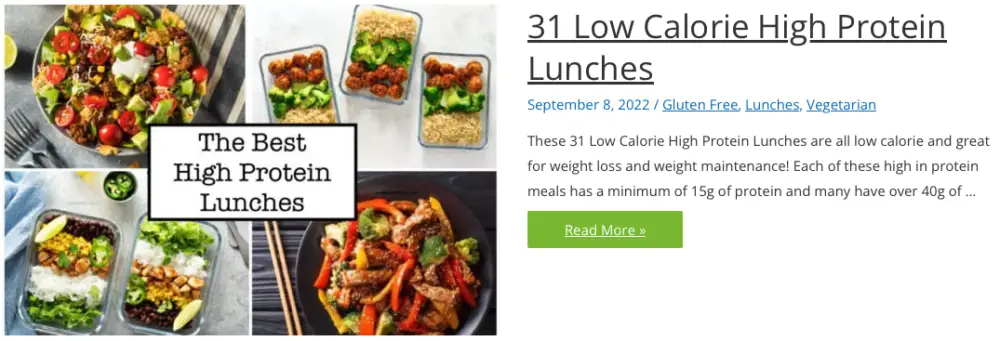

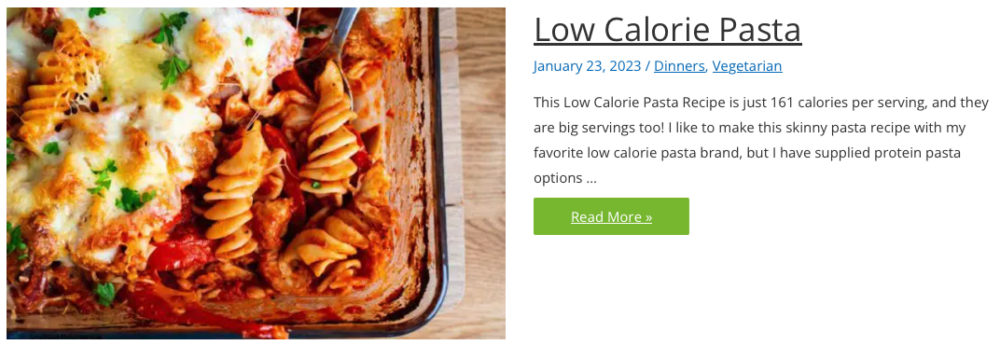

Lose Weight By Eating Cookbooks


Share this Low Calorie Guide:
